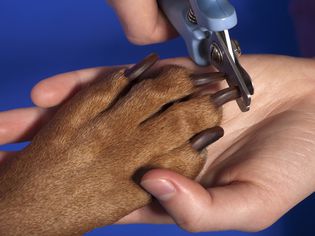Why Do Dogs Howl at Sirens?
It's no secret: Some dogs love to howl at sirens. Why do some dogs feel compelled to vocalize when an ambulance drives by wailing their sirens? Wh

While dog bites can happen for many reasons, fear aggression is a common concern. Just like humans, dogs can inherit a tendency to be anxious, and the dog's environment, life experience, and breed tendencies also play a role. That can lead to scared puppies as well as adult dogs, that react with aggression to frightening events.
Poor socialization increases the potential for many kinds of aggression and other behavioral problems later in life. Puppies who did not have adequate exposure to other dogs and to common experiences in their environment including noises, different kinds of people (including children), and situations (car rides, veterinary visits, etc) may become fearful of some or all of these situations. The window for socialization in puppies is fairly short—usually between 8-14 weeks of age, but it may vary by a few weeks for different dogs. After that window closes, it takes more training and positive reinforcement to help dogs become desensitized to scary experiences.
When dogs fear something, it triggers the instinctive “fight or flight” response. Different dogs react differently to fear, and while some may try to run away, hide, or freeze, others may growl, bark and/or bite. Fear biters think they must fight their way out of the situation, and become so panicked they aren’t able to think in a reasonable manner. When their aggressive behavior makes the scary “thing” go away, the dog learns that acting aggressively works and uses it time after time.
Fear aggression can escalate and become more intense over time. Sometimes owners don't recognize the early warning signs of fear in their dog, and as a result, the dog's behavior intensifies if the scary thing is still present. Punishing them with harsh physical or verbal reprimands will make the behavior worse as well because if they are punished for expressing more subtle signs, such as growling, they may stop growling but escalate to a more serious behavior such as biting.
Fearful dogs show displacement behaviors, such as licking or chewing themselves, sniffing, lip licking, and yawning. Common vocalizations include growls mixed with whines. Body language includes whale-eye—showing the whites of the eyes in an exaggerated sideways glance, shaking, lunging, or jumping on their owner.
Most normal dogs tolerate a fearful or unknown situation being one dog length and a half (their own length) away from them before feeling uncomfortable. A fearful pup’s sensitive distance may be much greater, and they may start to show signs of anxiety or aggression from much further away. As the scary situation gets closer, their behavior may intensify.
Shy pups may always have problems feeling fearful and working to help them become more comfortable requires a number of techniques. Most importantly, if you notice signs of fear in your dog, you should consult a behaviorist right away. These problems are much easier to treat when they are caught early and before they escalate too much. It is very important to seek out a highly trained behaviorist so look for one who is a Certified Animal Behaviorist (CAAB or ACAAB) or a veterinary behaviorist certified by the American College of Veterinary Behavior (Dip ACVB). Your veterinarian may be able to help you find a local behaviorist and should work in conjunction with them to provide the most comprehensive approach for your pup. You can also learn to recognize and avoid situations likely to cause your dog to react with fear. Here are a few ways to diffuse the fear.

It's no secret: Some dogs love to howl at sirens. Why do some dogs feel compelled to vocalize when an ambulance drives by wailing their sirens? Wh

Does your dog get aggressive—maybe even try to bite—when getting his or her nails trimmed? Many people enjoy getting their nails done at a salon, but

Eating grass is a common behavior in dogs and isn't as concerning as other things dogs try to eat. However, you may wish to stop your dog from eat

How does your dog feel about riding in your car? If it has no fear and loves a road trip, chances are it will jump right in. On the other hand, if it&

Just about everyone loves eating ice cream—what’s better than a cool, sweet treat on a hot day? When you make your next trip to the local creamery, yo

Rich in vitamins A and C, magnesium, potassium, and dietary fiber, nectarines are a sweet and nutritious summer fruit. But are nectarines safe for dog
We are an information hub dedicated to delivering clear, trustworthy, and engaging content across a wide spectrum of topics — from innovation and trends to daily life, wellness, and global developments.
Our team is passionate about creating content that helps people stay curious, make informed decisions, and understand the world with greater clarity and context.
With a focus on quality, relevance, and accessibility, we aim to offer a meaningful experience for everyone seeking knowledge, ideas, and thoughtful perspectives.